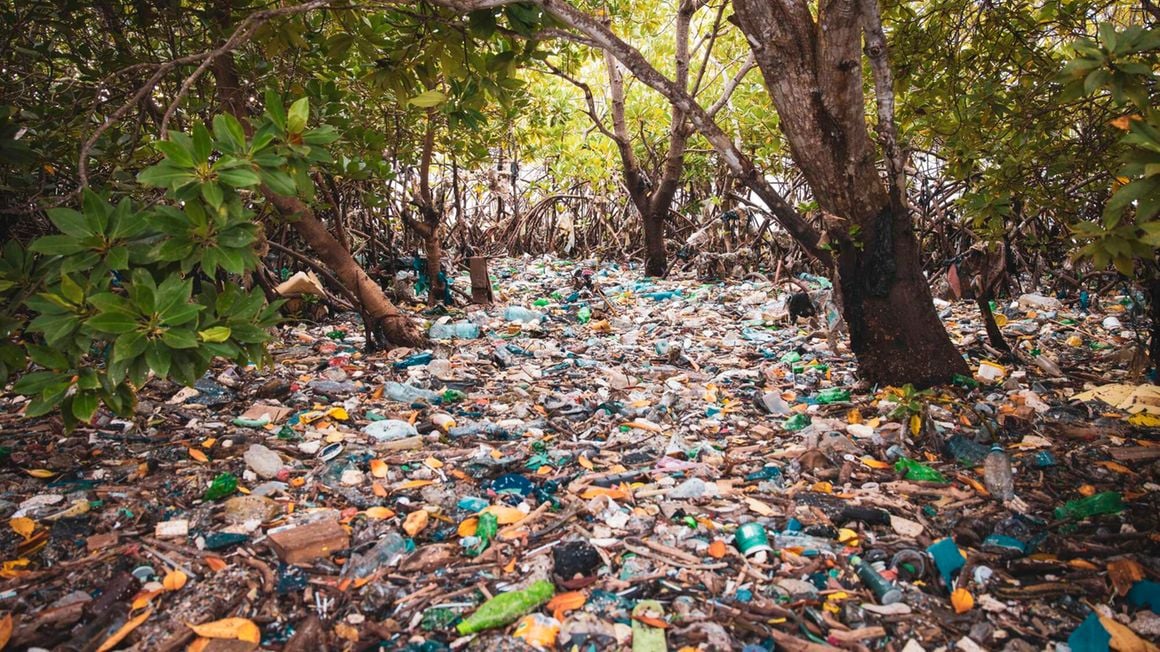Business
Despite a ban from 2017, Microplastics choke Kenya’s coastline

Silt deposits and rocks cover the Mwanguwa Ravine’s pathway in Mahoo Village, Taita Taveta County, under the intense midday sun, exposing patches of steep terrain that flood when it rains.
The ravine can be safely navigated without water, but as you walk through the silt deposits, you’ll notice that some of them have been transformed into landfills, carrying mostly used diapers, plastic bags, and bottles.
Several ravines in the region, including Mwanguwa, discharge their water into Njoro Springs, which is joined to River Lumi. This river discharges into Lake Jipe, a lake that shares territorial boundaries with Tanzania and Kenya.
This lake is a narrow tributary of the Lumi River, which empties into Tanzania’s Nyumba ya Mungu Reservoir and later becomes the Ruvu River.
The stream empties into the Indian Ocean as the Pangani River after merging with the Kikuletwa hot spring.
So, in addition to endangering the health of thousands of people who depend on water from all of these sources, this waste, particularly the plastic trash, poses a serious threat to the Indian Ocean’s environment.
Plastic waste disposal is a complicated problem, according to Grantone Mwandawiro, the Taita Taveta county executive committee member for Water, Sanitation, Environment, Climate Change, and Natural Resources.
The county states that the majority of the poorly managed plastic waste ends up in water bodies through drainage channels because the majority of the population lacks collection services, causing them to dump waste into storm drains.
The county produces 3,329 tonnes of plastic waste annually, the report states.
Kenya uses 1.3 million tonnes of plastic annually, of which 27% are collected and 8% recycled.
In 2017, Kenya banned the use of plastic carrier bags, but later expanded the ban to cover single-use plastics in protected areas.
The majority of marine debris found in Kenya’s oceans, rivers, and beaches is caused by land-based activities, with the Indian Ocean taking the brunt of this pollution, according to the National Environment Management Authority (Nema).
Five researchers from the Universities of Nairobi, Kwa Zulu Natal, and the Kenya Marine and Fisheries Research Institute collaborated on a study that was published in October 2021 in the European Journal of Sustainable Development Research. The study revealed the horrifying truth that there are many microplastics, or tiny pieces of plastic, in Kenya’s Indian Ocean.
The study found that compared to other regions of the world, Kenya’s coastline had a higher concentration of MPs in the surface waters.
According to marine ecologist Kevin Lunzalu, plastics that enter aquatic or marine ecosystems don’t degrade; instead, they fragment into microplastics.
“This takes thousands of years to break down, making their impact on marine ecosystems everlasting,” explains Mr Lunzalu.
According to environmental scientist Amos Wemanya, a new wave of plastic-related human-induced threats has an impact on the ocean’s functionality, quality of ecosystem services, and resilience.
“Since microplastics have a very long lifespan, they continually absorb organic pollutants as they stay in the marine environment, making them even more dangerous to ocean life and humans,” explains Wemanya.
Microplastics compromise how marine animals function, causing entanglement and ingestion that can be lethal.
“The tiny plastic fragments are persistent in the marine ecosystem and due to their small size in nature, these fragments are mistaken as food and ingested by a range of marine animals,” explains Lunzalu.
Endangered marine species like sea turtles face more threat from microplastics, he says.
“High concentrations of small plastic fragments alter the temperatures of the sand on the nesting beaches, which results in the artificial determination of the sex rations of the turtles. For juveniles and adults, the harm mainly comes from direct ingestion, causing internal injuries.”
Since humans rely on fish from the ocean and its surrounding ecosystems, they are not immune to the effects of microplastic pollution.
Nearly 15% of the microplastics in the guts of the fish studied, according to research published in March by ScienceDirect Journal, may cross fish gut barriers and end up in human muscles where they are consumed.
But experts continue to be upbeat.
Despite the fact that there are so many microplastics in the oceans, Lunzalu asserts that there is still hope.
In order to decrease the use of single-use plastics, lessen the negative effects on the environment, and improve consumer behavior, Kenya has put in place frameworks and regulations. International protocols support this.
By limiting the consumption of goods that are packaged in or made from single-use plastics, experts say it is possible to reduce the amount of plastic that ends up in the ocean on an individual basis.











